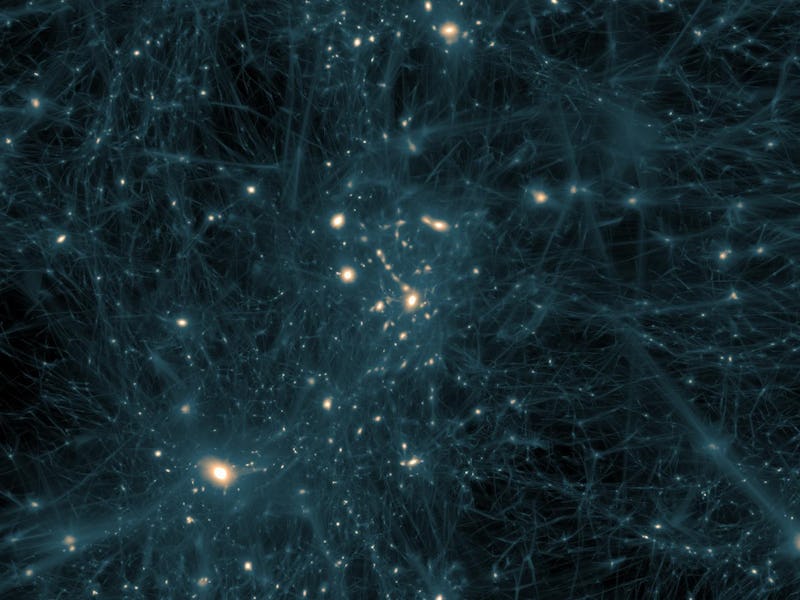A Supercomputer Just Solved a Big Mystery Behind Dark Matter
We now know the mass of an axion, which means we might be able to prove dark matter does indeed exist.

Physicists have spent close to a century looking for dark matter — the elusive substance that we’re pretty sure exists, but have yet to actually observe and measure in the flesh, in part because we have no idea what to look for. A piece of that mystery is now cleared up: A new study run by German and Hungarian scientists and published in Nature, used a supercomputer to predict the mass of axions, which are thought to be the constituent particles that make up dark matter.
“Dark matter is an invisible form of matter which until now has only revealed itself through its gravitational effects. What it consists of remains a complete mystery,” study co-author Andreas Ringwald, of the German Electron Synchrotron in Hamburg, in a news release. “The adjective ‘dark’ does not simply mean that it does not emit visible light. It does not appear to give off any other wavelengths either – its interaction with photons must be very weak indeed.”
The only real evidence we have for its existence is the fact that stars and galaxies in the universe move around in such peculiar ways that there must be some gravitational effects caused by unseen forces — i.e. dark matter. It’s believed that dark matter makes about 85 percent of all mass in the universe.
And so far, we haven’t found a single signal that seems to pinpoint a direct observation of dark matter. Trying to directly measure an axion is an even more difficult step to take.
However, knowing what an axion’s mass is means that any measurements of a strange signal could be compared to this number. If they match, scientists would have a better understanding of whether its worth following up on in terms of dark matter research.
The research team for this study used a computer modeling to find out axions have a mass between 50 and 1,500 micro electronvolts, which is about 10 billion times lighter than an electron.
This means the universe would contain about 10 million axions per cubic centimeter on average — and because dark matter is a clumped substance, the Milky Way would actually contain about 1 trillion axions per cubic centimeter.
Scientists might be able to use these numbers to determine if, indeed, axions exist. This would not finish the race to determine whether dark matter exists, but also solve a quantum physics problem as to why the strong interactive force is symmetrical with regards to time reversal.
Indeed, even physics is nearing a point where computers are able to reveal more about our world than classic human-run investigations can. But if the consequence is an ability to finally cross off a slew of questions that have plagued science for decades, perhaps we should celebrate the dawn of supercomputing.